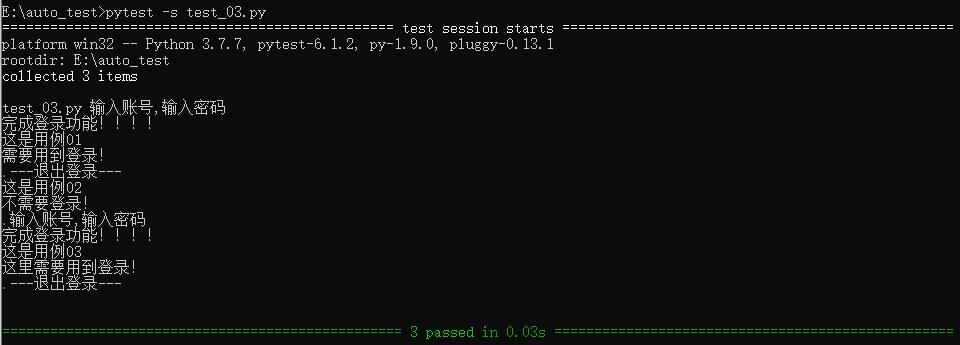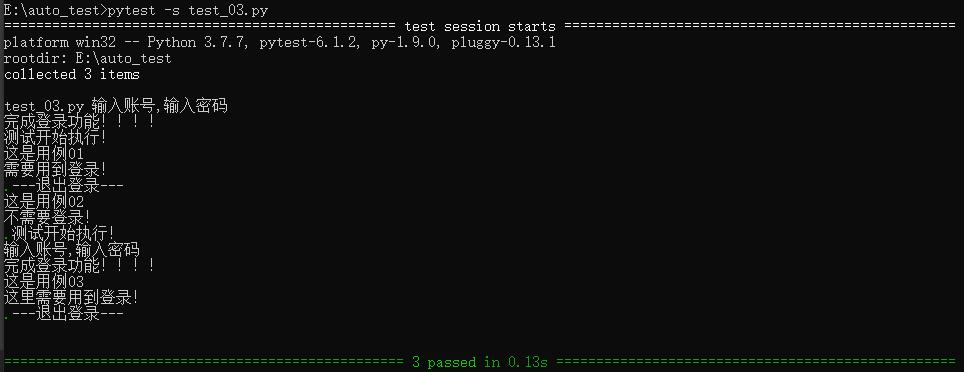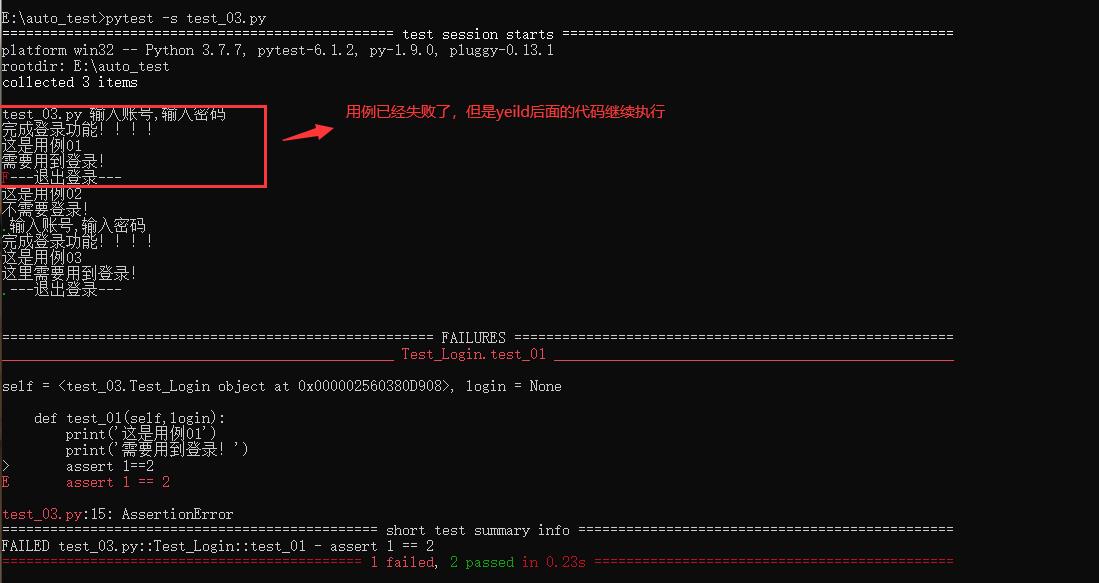pytest学习4fixture简单使用
Posted 零点六一八
tags:
篇首语:本文由小常识网(cha138.com)小编为大家整理,主要介绍了pytest学习4fixture简单使用相关的知识,希望对你有一定的参考价值。
上一篇介绍了如何通过setup和teardown来帮助我们做自动化的前置和后置内容,那么如果有一个场景,有的用例需要用到登录的方法,有的却用不到登录的方法,这时如果用setup和teardown的方法就不能写在一个测试类中,但是pytest中还有更好的前置内容,不需要每个用例都能用到。
fixture
fixture属于pytest中的一个方法,fixture是在测试函数运行前后进行执行的,fixture的命名不规范没有强制要求,以及里面的代码内容可以自己进行定制从而满足多种测试需求,配置测试前的数据清理,以及测试完成后的数据管理。fixture中的代码处理测试后的代码为 yield 测试开始前会执行yield前面的代码(setup),测试完成后将执行yield后面的代码(teardown),在fixture中不是强制必须有yield,比如,我只有前置代码,没有后置代码,那就不需要yield内容。或者只有后置代码,没有前置代码。无论测试过程中发生什么错误,yield后续的代码都会被执行
源码:
def fixture( # noqa: F811
fixture_function: Optional[_FixtureFunction] = None,
*,
scope: "Union[_Scope, Callable[[str, Config], _Scope]]" = "function",
params: Optional[Iterable[object]] = None,
autouse: bool = False,
ids: Optional[
Union[
Iterable[Union[None, str, float, int, bool]],
Callable[[Any], Optional[object]],
]
] = None,
name: Optional[str] = None
) -> Union[FixtureFunctionMarker, _FixtureFunction]:
通过上面的源码可以看到fixture一共有5个参数分别是:name,scope,params,autouse,ids。
栗子:
有的需要登录,有的必须要登录操作
import pytest
@pytest.fixture()
def login():
print(\'输入账号,输入密码\')
print(\'完成登录功能!!!!\')
yield
print(\'---退出登录---\')
class Test_Login():
def test_01(self,login):
print(\'这是用例01\')
print(\'需要用到登录!\')
def test_02(self):
print(\'这是用例02\')
print(\'不需要登录!\')
def test_03(self,login):
print(\'这是用例03\')
print(\'这里需要用到登录!\')
if __name__ == \'__main__\':
pytest.main([\'-s\',\'test_03.py\'])

这里会发现,我在用例1和用例3中进行通过fixture进行使用,然后用例1和用例3都执行了配置的登录和退出登录内容。用例2,我没用使用fixture方法,所以没用执行对应代码。
也可以通过--setup-show的方法来查看详细的fixture信息

多个fixture使用
在一个测试用例中可以使用多个fixture的方法,执行顺序根据你传入的顺序进行执行。
import pytest
@pytest.fixture()
def login():
print(\'输入账号,输入密码\')
print(\'完成登录功能!!!!\')
yield
print(\'---退出登录---\')
@pytest.fixture()
def add():
print(\'测试开始执行!\')
class Test_Login():
def test_01(self,login,add):
print(\'这是用例01\')
print(\'需要用到登录!\')
def test_02(self):
print(\'这是用例02\')
print(\'不需要登录!\')
def test_03(self,add,login):
print(\'这是用例03\')
print(\'这里需要用到登录!\')
if __name__ == \'__main__\':
pytest.main([\'-s\',\'test_03.py\'])

结果可以看出来,用例1:把login方法的fixture放在了前面,先执行的login方法后执行的add,用例3:add方法在前面,login方法在后面,执行也是add先执行,login后执行。
fixture相互调用
其实fixture之间也是可以进行相互调用的。
import pytest
@pytest.fixture()
def login():
print(\'输入账号,输入密码\')
print(\'完成登录功能!!!!\')
yield
print(\'---退出登录---\')
@pytest.fixture()
def add(login):
print(\'测试开始执行!\')
yield
print(\'测试结束!\')
class Test_Login:
def test_01(self, add):
print(\'------用例01------\')
def test_02(self):
print(\'------用例02------\')
def test_03(self,login):
print(\'------用例03------\')
if __name__ == \'__main__\':
pytest.main([\'-s\', \'test__01.py\'])

通过上面的执行结果可以看到,我们fixture中的login函数被add函数进行调用了,然后在用例中直接执行add,login中的内容也进行了执行
yield遇到异常后继续执行
在前面介绍fixture的时候说过,fixture执行过程中,无论遇到什么异常,都会继续执行yeild后面的代码(teardown)
import pytest
@pytest.fixture()
def login():
print(\'输入账号,输入密码\')
print(\'完成登录功能!!!!\')
yield
print(\'---退出登录---\')
class Test_Login():
def test_01(self,login):
print(\'这是用例01\')
print(\'需要用到登录!\')
assert 1==2
def test_02(self):
print(\'这是用例02\')
print(\'不需要登录!\')
def test_03(self,login):
print(\'这是用例03\')
print(\'这里需要用到登录!\')
if __name__ == \'__main__\':
pytest.main([\'-s\',\'test_03.py\'])

从例子中很清楚的就发现我们的后置代码在报错的情况下也会执行。在自动化测试过程中,无论测试结果如何,测试数据是肯定能清理的很干净。
以上是关于pytest学习4fixture简单使用的主要内容,如果未能解决你的问题,请参考以下文章
